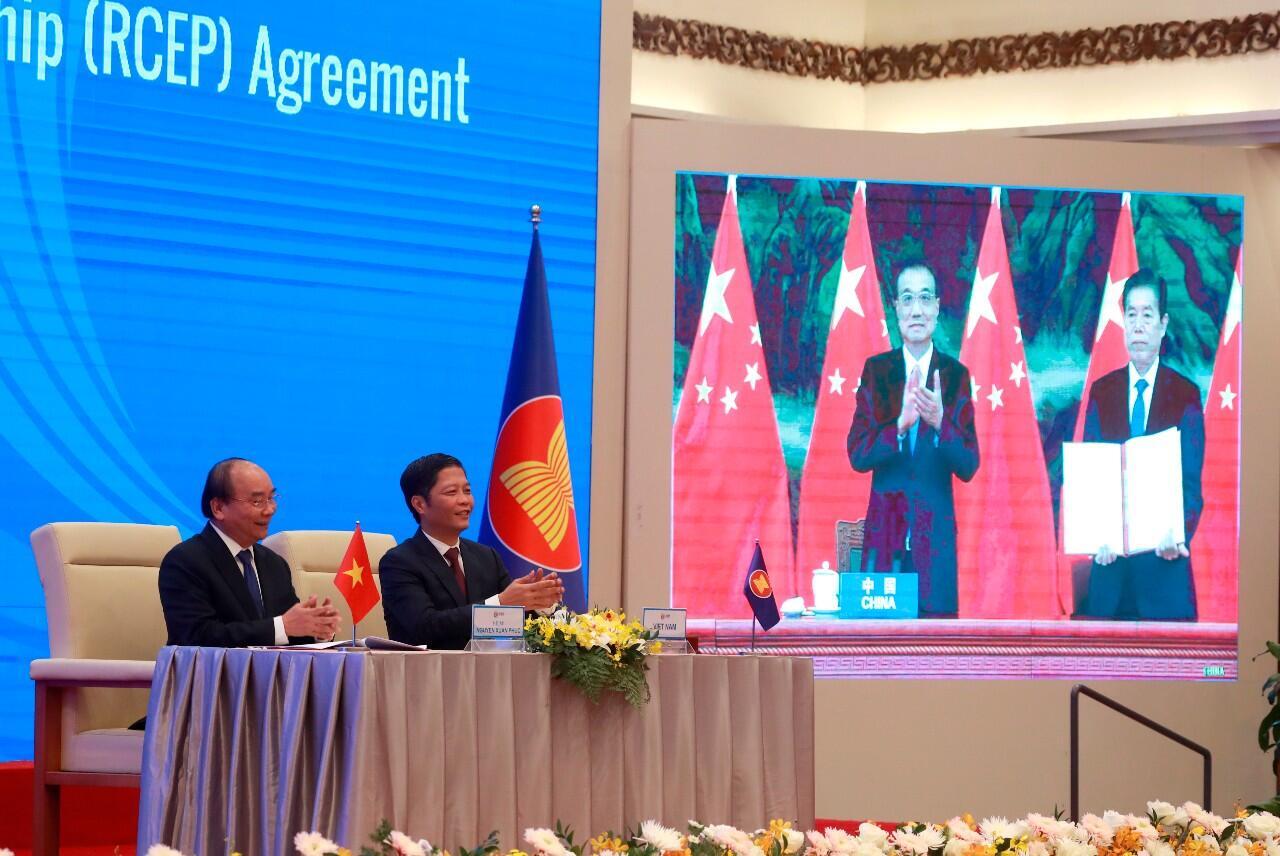RCEP, the largest economic free trade agreement, enters into force in the Asia-Pacific region

15 countries are part of the agreement, which is considered the largest free trade agreement in the world. Nearly a third of the population and 30% of global GDP is concentrated in the area covered by the agreement, whose members—not including the United States—exchange more trade with each other than with both the United States and Europe. Critics believe it is too focused on favoring China and lacks regulation on labor rights and the environment.
On January 1, the Regional Comprehensive Economic Association (RCEP), a free trade agreement that seeks to increase exchanges by 42 billion dollars in a region that includes the world’s second-strongest economy, almost entirely China, entered into force. A third of the world’s population and 30% of global GDP.
The agreement, which is considered the largest free trade agreement in the world, includes 15 countries, and hopes for the economic relaunch of the region in the midst of the pandemic are centered on it.
In the first phase, RCEP has been activated in Australia, Brunei, Cambodia, China, Japan, Laos, New Zealand, Thailand, Singapore and Vietnam, and on February 1 it will be activated in South Korea.
Ratification of Malaysia and the Philippines is still pending, and Indonesia’s Economy Minister, Erlanga Hartarto, said on Friday that he believed his country would ratify the accession in 2022. Myanmar has already agreed, but the bloc has not yet given approval – forward.. to enter the nation that ousted A military coup in her government.
Meanwhile, the United States stands out by its absence, in a treaty that is seen as a springboard for China to further boost its economy in the coming years and decades, as well as a lever to strengthen its sphere of influence after the crisis. The pandemic created it.
What benefits will RCEP bring to its members?
The treaty provides for a reduction in customs duties on those manufactured products by at least 40% of the parts coming from the RCEP area, which at this time represents 65% of the goods exchanged between the signatory countries. It is expected that after 20 years of entry into force of the agreement, this percentage will reach 90% of the products.
Reduction of state income from tariffs shall not affect the provision of public services such as health or social spending, which are generally financed by direct taxes, such as income.

RCEP is also simplifying business processes, providing intellectual property rights and public procurement, and covering areas that have particularly grown during the pandemic such as e-commerce.
In the two years since the onset of Covid-19, countries in the region have experienced a contraction of the economy and production capacity. In 2020, this decline was 1.5% and according to the forecasts of the Asian Development Bank, a 7% recovery was supposed for the year ended, but an additional slowdown of 5.3% is expected in 2022.
Millions of jobs have been lost, resulting in reduced manufacturing and shipping impacts on supply chains globally. Participation in the largest free trade agreement on the planet will act as a catalyst for mitigating the effects of the pandemic.
Not everything is perfect in RCEP
However, RCEP also has its critics and detractors, who find significant loopholes and disproportionate advantages for the region’s largest economy, China. In fact, India decided not to agree to the agreement, fearing that Chinese imports would overwhelm its markets.
The RCEP lowers barriers in the exchange of agricultural, finished goods and components, which make up the majority of exports from the bloc countries, but provides little insight into trade in services or the operation of businesses in economies other than those of the bloc. The United States, their countries of origin.
Nor does it contain specifically demanding provisions regarding labor rights or environmental impact, essential aspects of any treaty signed with the consent of the European Union and other Western countries. For example, the Trans-Pacific Agreement, an agreement with many of the same countries – with the exception of China – includes aspects of strengthening labor law standards and environmental law, among other things.
According to some economic newspapers, the peasant organizations also fear that the treaty will lead to the loss of land to small owners in favor of large corporations. in the past decade, 9.6 million hectares of this land has been transferred to large multinational corporations Like South Korea’s Daewoo, Singapore’s Wilmar, or China’s Beidahuang, according to the NGO Grain.
Balance is another aspect where analysts see cracks. Report of the United Nations Conference on Trade and Development which was prepared in March warns that the RCEP will benefit the trade balance of highly developed countries, such as Japan, but not with other countries with less powerful economies such as Cambodia.
In the midst of this chiaroscuro, the signatories to the treaty see an opportunity to fight poverty, open up new markets and expand sources of parts imports, which will enhance the competitiveness of the manufacturing sector, as emphasized by the Philippine Commerce Secretary, Ramon Lopez, when he recommended Congress approve the accession.
With AP, EFE and Reuters

“Award-winning zombie scholar. Music practitioner. Food expert. Troublemaker.”









